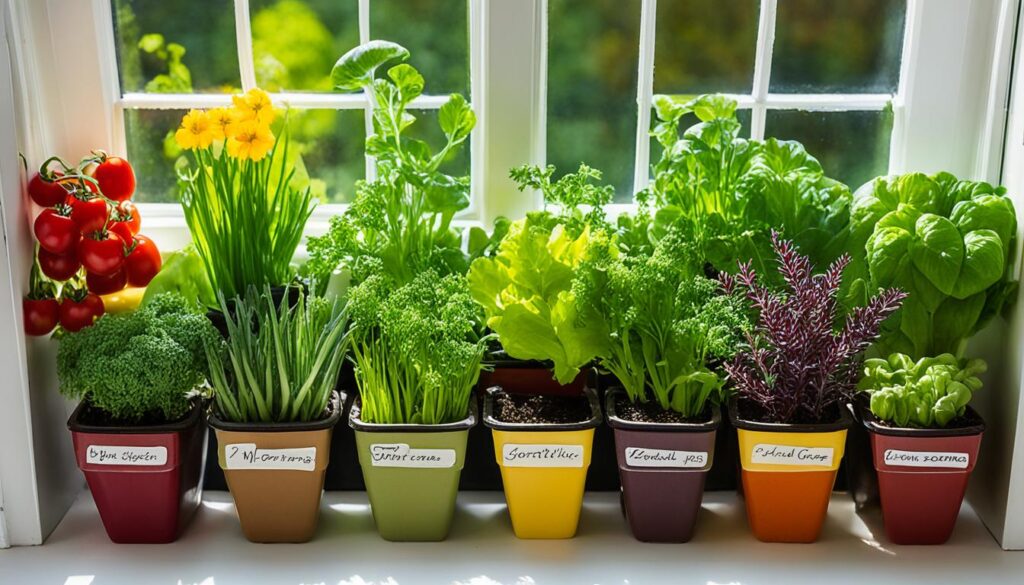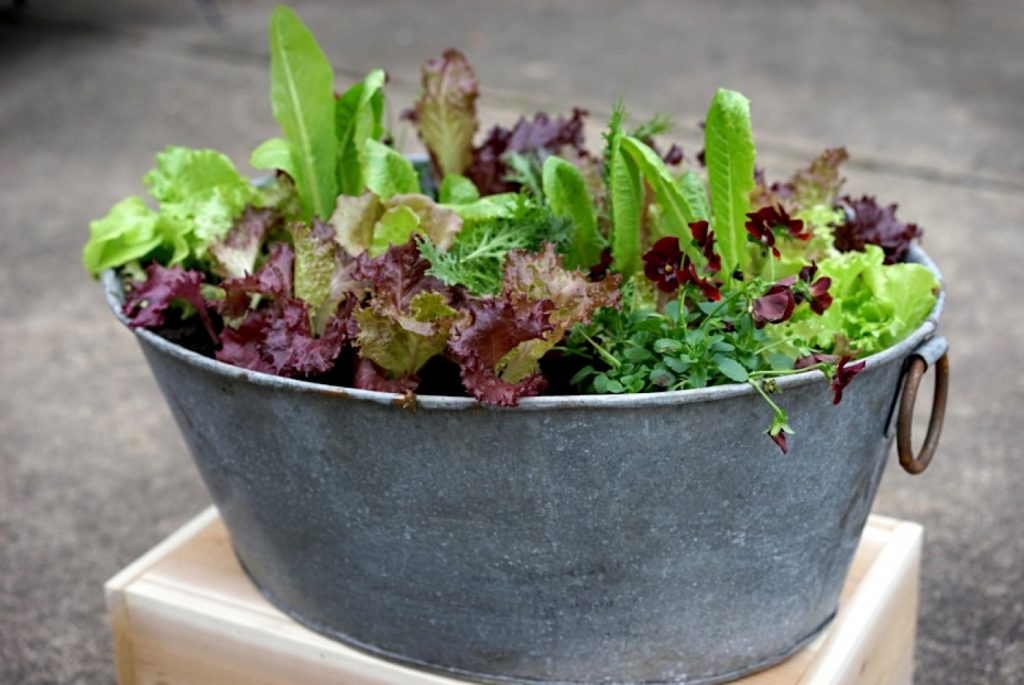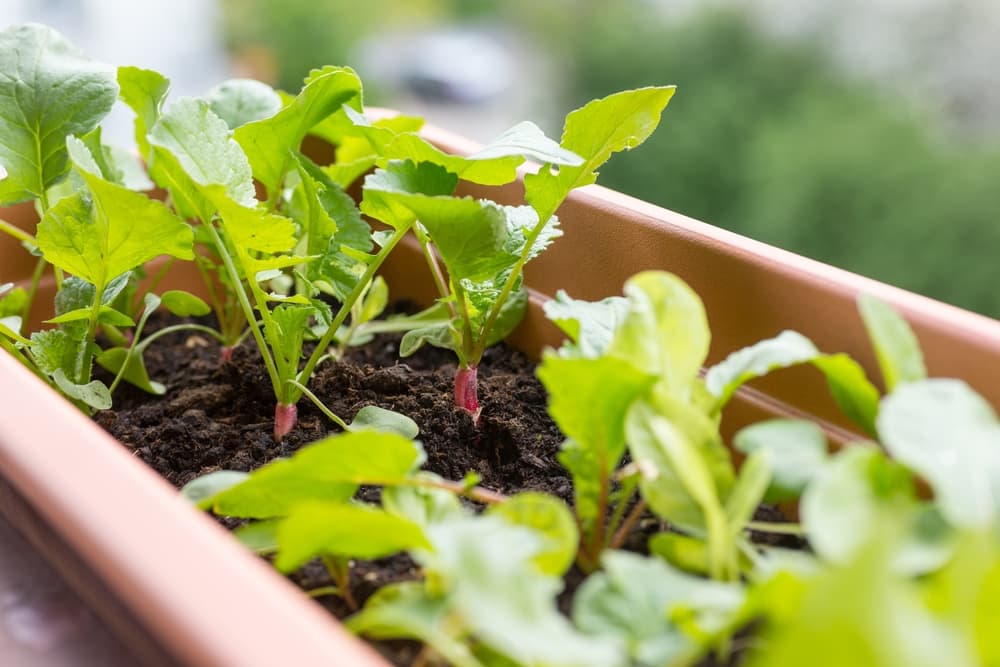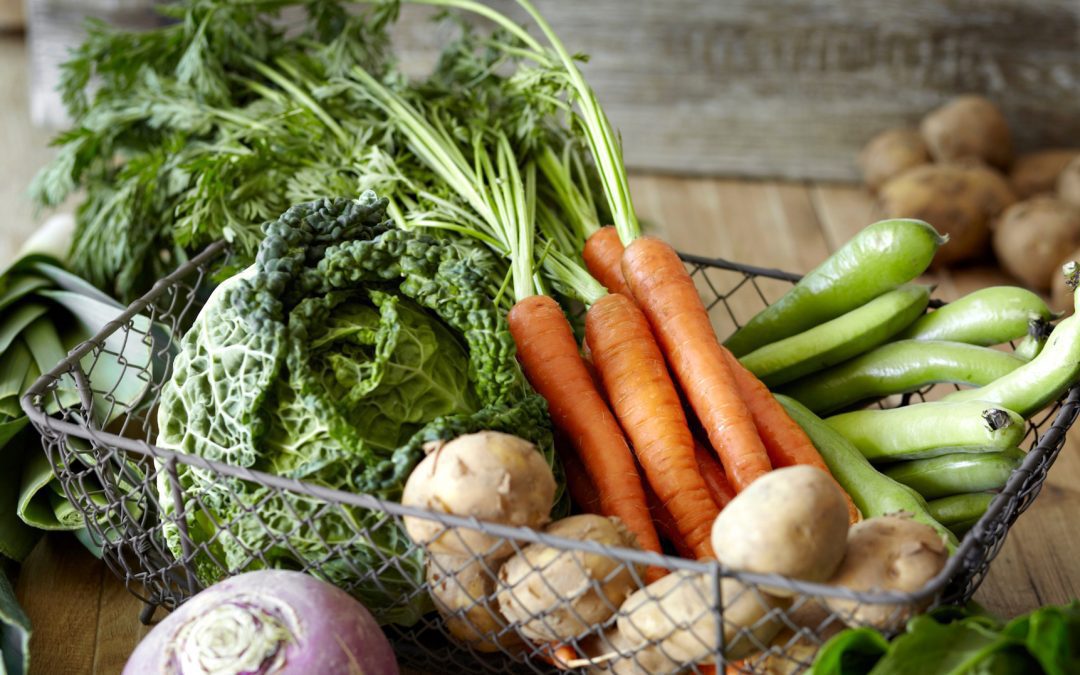Growing vegetables indoors is a brilliant way to get fresh food all year, even if you don’t have a garden or much space. With the right plants, light, and containers, you can harvest leaves, pods, and fruits straight from your windowsill or plant shelf.
If you want to focus on quick results, it’s worth reading our guide to Fastest Growing Indoor Vegetables first, then using this article to plan a wider mix for your indoor garden.
Contents
- 0.1 Why Grow Vegetables Indoors?
- 0.2 Conditions for Successful Indoor Vegetables
- 0.3 Best Leafy Greens for Indoor Gardening
- 0.4 Best Fruiting Vegetables for Indoor Gardening
- 0.5 Best Root and Compact Vegetables for Indoor Gardening
- 0.6 Herbs and Companion Veg for Indoor Gardening
- 0.7 FAQs About the Best Vegetables for Indoor Gardening
- 0.8 Final Thoughts on the Best Vegetables for Indoor Gardening
- 0.9 Related Articles
- 1 Regrow Kitchen Scraps on Your Windowsill
Why Grow Vegetables Indoors?
Indoor vegetable gardening is perfect for renters, city living, and anyone who wants more control over how their food is grown. You’re protected from frost, heavy rain, slugs, and many common outdoor pests, so plants often stay cleaner and healthier.
It also makes harvesting easier. Instead of going outside in bad weather, you’re cutting salad leaves and herbs just a few steps from the kitchen. For many people, this convenience is what turns indoor vegetables into a long-term habit rather than a one-off experiment.

Conditions for Successful Indoor Vegetables
Before choosing the best vegetables for indoor gardening, it’s important to understand the conditions they need.
Light
Most vegetables need at least 6 hours of bright light a day. A sunny south- or west-facing window is ideal. If your home is darker, a compact indoor LED grow light for vegetables helps prevent leggy, weak growth and keeps plants productive.
Containers and soil
Use pots with drainage holes and a high-quality vegetable or multi-purpose potting mix. Deeper pots work best for root crops and larger fruiting plants, while shallow trays are fine for baby leaves.
Watering and feeding
Indoor containers dry out more quickly than garden beds, so check moisture regularly. Most vegetables like evenly moist, not soggy, soil. A light feed with a balanced liquid fertiliser every couple of weeks keeps plants growing steadily.
Best Leafy Greens for Indoor Gardening
Leafy greens are some of the best vegetables for indoor gardening because they don’t need huge roots or deep soil. You can harvest them gradually and they regrow quickly.
Lettuce (cut-and-come-again varieties)
Loose-leaf lettuces thrive in shallow trays or pots. Sow thickly, then cut leaves with scissors when they reach 10–15 cm tall. They prefer cooler rooms and bright, indirect light.
Rocket (Arugula)
Rocket grows fast and has a peppery flavour that livens up salads. It’s happy in window boxes or troughs and will keep producing if you harvest a little at a time.
Spinach
Spinach prefers cooler conditions and consistent moisture. Baby leaves are easy to grow indoors and can be harvested regularly for smoothies, salads, and cooking.
Kale (baby leaf)
Dwarf or baby-leaf kale varieties adapt well to pots. Harvest the outer leaves, leaving the centre to keep growing.

Best Fruiting Vegetables for Indoor Gardening
Fruiting vegetables need a bit more light and space, but they’re still some of the most rewarding vegetables to grow indoors.
Cherry tomatoes
Compact cherry tomato varieties are ideal for sunny windowsills or under grow lights. They need stakes or a small trellis for support, and regular watering to prevent blossom end rot.
Bell peppers and chillies
Dwarf peppers and chillies stay relatively small but produce plenty of fruit. They love warm, bright spots and benefit from consistent feeding during flowering and fruiting.
Dwarf cucumbers
Certain cucumber varieties are bred for containers and shorter vines. They need strong light and support, but reward you with crisp fruits for salads and snacks.
For fruiting vegetables in particular, a self-watering indoor planter for vegetables helps keep moisture more consistent and reduces the risk of missed waterings.
Best Root and Compact Vegetables for Indoor Gardening
Root vegetables and compact “mini” varieties can also perform well indoors if you give them enough depth and loose soil.
Radishes
Radishes grow quickly and don’t need much space, making them ideal for beginner indoor gardeners. Use deeper trays or pots and harvest when roots reach full size to keep them crisp.
Baby carrots
Short or ball-shaped carrot varieties work best in containers. They need deep, stone-free soil so roots can grow straight and smooth.
Spring onions (green onions)
Spring onions are tolerant of closer spacing and can be grown on a bright windowsill. Harvest them at pencil thickness for the best flavour.
Dwarf bush beans
Compact bush bean varieties can be grown in containers with good support. They need plenty of light but give satisfying harvests of pods in a relatively small footprint.

Herbs and Companion Veg for Indoor Gardening
Herbs aren’t technically vegetables, but they pair perfectly with indoor veg and help you get more flavour out of every harvest.
Good herb companions include:
basil with cherry tomatoes
chives with leafy greens
coriander with rocket and salads
parsley with root veg and potatoes (if you grow them in bags indoors)
You can tuck herbs into the same containers as your vegetables, or dedicate a separate tray or pot to them.
According to a university extension guide on growing vegetables indoors, mixing quick-growing leafy greens with herbs and a few compact fruiting plants is one of the most reliable ways to get regular harvests in small spaces.
FAQs About the Best Vegetables for Indoor Gardening
1. What are the easiest vegetables to grow indoors?
Leafy greens like lettuce, rocket, spinach, and baby kale are usually the easiest. They grow quickly, need less depth, and tolerate slightly lower light than big fruiting plants.
2. Can I grow vegetables indoors without a grow light?
Yes, if you have a bright south- or west-facing window and choose easier crops like leafy greens and herbs. For tomatoes, peppers, and cucumbers, a grow light usually gives much better results.
3. How deep do containers need to be for indoor vegetables?
Leafy greens can manage with 10–15 cm of depth, while root crops and fruiting vegetables usually need 20–30 cm. Deeper containers allow stronger root systems and more stable plants.
4. How often should I water indoor vegetables?
Water when the top couple of centimetres of soil feel dry. This might be every few days in warm weather, but avoid watering on a strict schedule — always check the soil first.
5. Can I reuse potting soil from indoor vegetable containers?
You can, but it’s best to refresh it with compost or a fresh mix between crops. Over time, nutrients are used up and soil structure can break down.
Final Thoughts on the Best Vegetables for Indoor Gardening
Choosing the best vegetables for indoor gardening comes down to matching crops with your light, space, and time. Leafy greens, dwarf varieties, and quick root crops are perfect for beginners and give you regular harvests without needing a big garden. As your confidence grows, you can add cherry tomatoes, peppers, and other fruiting vegetables for even more variety.
With a few good containers, a reliable light source, and a simple watering routine, your indoors can become a surprisingly productive mini vegetable patch all year round. Indoor vegetable gardening is flexible, scalable, and a great way to enjoy fresher food straight from your own home.
Related Articles
GROW EVEN MORE FOOD INDOORS
Regrow Kitchen Scraps on Your Windowsill
Once you’ve picked the best vegetables for indoor gardening, you can stretch your harvest even further by regrowing scraps. Learn how to turn everyday leftovers like spring onions, lettuce stumps, and carrot tops into fresh new growth indoors.

